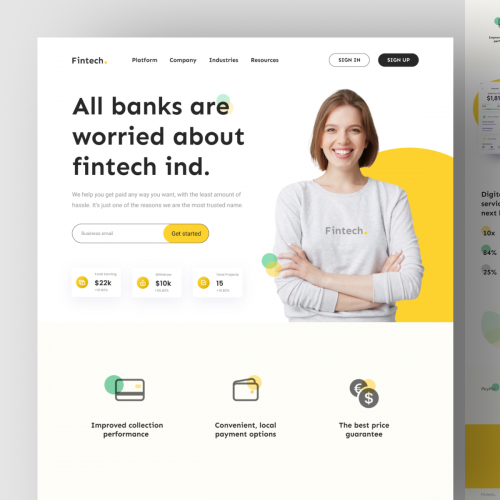Leading Tips for Developing an Impactful Web Site Layout That Converts
To attain this, one must consider a selection of elements, including recognizing the target audience, focusing on user experience, and maximizing for mobile systems. The critical use of compelling call-to-actions and a well-defined aesthetic hierarchy plays a critical role in guiding users through their trip.

Understand Your Target Audience
Recognizing your target market is essential to efficient internet site layout, as it lays the groundwork for producing an interesting user experience. Determining who your users are, including their demographics, preferences, and actions, makes it possible for designers to tailor the site's web content, layout, and functionality to meet certain demands.
Performing detailed marketing research is essential in this process. Surveys, meetings, and analytics can give important understandings right into customer assumptions and pain points. By assembling this data, designers can create individual characters that stand for various sectors of the audience, making certain that design choices are notified and appropriate.
Furthermore, understanding the target market assists in picking proper layout components such as color design, typography, and imagery that reverberate with customers. A site that speaks directly to its audience promotes a feeling of connection and trust, urging longer check outs and higher conversion rates.
Ultimately, a user-centered approach to internet site design not only boosts user fulfillment however additionally sustains organization purposes by driving engagement and commitment. By prioritizing the needs and choices of the target audience, an internet site can properly offer its function and achieve wanted outcomes.
Prioritize User Experience
To boost the general effectiveness of a website, prioritizing individual experience (UX) is essential (Website Design). A properly designed UX guarantees that site visitors can browse the website easily, find details swiftly, and involve with content meaningfully. This leads to enhanced customer fulfillment and greater conversion rates
Begin by executing user-friendly navigation. Menus must be realistically structured, allowing customers to situate essential locations of the website with marginal initiative. Consistency in style components, such as color design and fonts, fosters knowledge, which is essential for maintaining individual interaction.
Furthermore, think about the filling rate of your internet site. A delay of simply a few secs can result in substantial drop-offs, as individuals are much less most likely to await a slow-loading page. Enhancing photos and enhancing code can enhance performance and retain visitors.
In addition, clarity in content presentation is important. Usage concise, engaging language and separate message with visuals to improve readability. By prioritizing customer experience, you not only develop an extra satisfying setting for visitors however also strengthen your brand's trustworthiness. Eventually, an emphasis on UX is a financial investment in the lasting success of your internet site.
Optimize for Mobile Gadgets
Maximizing for smart phones is essential in today's electronic landscape, where a boosting variety of customers accessibility internet sites through smartphones and tablets. A mobile-friendly style not just enhances user experience yet also plays a substantial duty in improving online search engine positions. To achieve this, it is important to take on a responsive style that instantly adapts to numerous display sizes and alignments.

Loading rate is another crucial variable; mobile users are typically much less client and anticipate quick access to information. Maximize images and take advantage of internet browser caching to enhance performance. Finally, test your website on multiple devices and screen resolutions to identify and rectify any kind of prospective usability problems. By prioritizing mobile optimization, you make sure that your web site remains affordable and effectively engages a more comprehensive audience.
Use Engaging Call-to-Actions
A website's efficiency frequently pivots on its capability to guide visitors toward wanted activities, making engaging call-to-actions (CTAs) necessary elements of layout. CTAs click for more info act as the additional resources crucial points that route users to engage with the site, whether that suggests making an acquisition, enrolling in an e-newsletter, or downloading and install a source.
To create effective CTAs, quality is vital. Usage succinct language that clearly interacts the activity you desire the user to take. Phrases such as "Start," "Join Free," or "Shop Now" not just share urgency however likewise remove obscurity. The positioning of CTAs is just as vital; they ought to be purposefully positioned throughout the webpage to ensure they are quickly visible, especially in high-traffic areas.
Furthermore, consider utilizing directional hints, such as arrowheads or photos, to guide individuals towards these switches. By concentrating on these components, services can substantially improve user involvement, driving conversions and ultimately attaining their website's goals.
Concentrate On Visual Pecking Order
Effective web site design counts greatly on a well-structured aesthetic power structure that overviews customers through content flawlessly. By arranging aspects in a manner that focuses on details, designers can enhance user experience and facilitate decision-making. This entails utilizing size, shade, contrast, and spacing purposefully to accentuate the most vital elements of a web page.
Using bigger typefaces for headings and subheadings develops a clear difference in between different areas, enabling customers to check content effortlessly. Furthermore, employing different shades for switches and calls-to-action can capture customer focus and motivate communication. Whitespace is one more important element; it prevents clutter and makes it possible for customers to concentrate on vital messages without interruptions.
Pictures and graphics ought to match the message while also adhering to the well-known power structure, enhancing the total message (Website Design). Uniformity in design components, such as color plans and typography, additional strengthens the visual pecking order, making Full Article navigation intuitive

Final Thought
To conclude, reliable website style demands a comprehensive understanding of the target audience, prioritization of customer experience, and mobile optimization. The critical usage of engaging call-to-actions and a well-defined aesthetic hierarchy even more boosts individual engagement. By implementing these principles, sites can accomplish greater conversion rates, guaranteeing that style aspects not just attract site visitors yet also assist in seamless navigating and interaction. Inevitably, a well-executed site layout serves as a crucial element in driving customer actions and achieving service objectives.